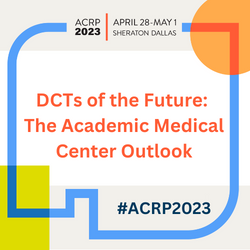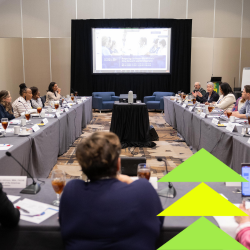Elements of decentralized clinical trials (DCTs), such as electronic data capture (EDC), have been in use for many years, with adoption of newer technologies accelerating sharply during the COVID-19 pandemic. Most current trials are hybrid, including both DCT and traditional trial elements.
“DCT is new term for an old phenomenon – enabling a well-executed trial that meets the participant where they are, emotionally, intellectually, and physically,” says Jeri Burr, MS, RN, PED-BC, CCRC, FACRP, Executive Director of the Utah Trial Innovation Center. “In historical trials, we often had to travel to take lab samples from participants – using a portable phlebotomy station and a centrifuge. All that has changed is the level of technology available. Now we can use a needle-free Hemolink device for remote clinical trial blood collection. Designed by an academic medical center (AMC), this pulls blood from tiny capillaries in the skin under remote control.”
“Similar advances have happened elsewhere in clinical trials,” adds Burr, “When I began my career as a research coordinator, paper was the medium of choice. We’d line up 25 copies of the same submission to give to the institutional review board (IRB). Now, we just upload an electronic version into the eIRB, where it is available to all reviewers at the press of a button.”
“Another difference with today’s remote trials is that the study team needs to include electronic data engineers, data scientists, and informaticists,” notes Jamie P. Dwyer, MD, Associate Dean of Clinical Research, Director of the Utah Data Coordinating Center (DCC), and Professor of Medicine, University of Utah. “These roles are vital in validating data from devices that record electronic patient-reported outcomes (ePROs), and achieving data integration and harmonization. Cybersecurity experts are also needed to help mitigate threats from cyberattacks such as malware and phishing schemes. Blockchain is being explored as a way to improve cybersecurity.”
“DCTs challenge the status quo, offering a toolkit that we can use to simplify collection of information, harnessing new technology that didn’t exist before,” says Dwyer. “As a natural evolution, these tools enable integration of large volumes of data – for example, instead of measuring A1C at intervals to track control of diabetes, we now have real-time continuous glucose monitoring.”
DCTs of the Future: The AMC Outlook
Join Jeri at ACRP 2023 [April 28 – May 1; Dallas, TX], where she—along with Drs. Dwyer and VanBuren—will share practical tips and suggestions for working with AMCs and executing DCT approaches outside the traditional brick-and-mortar research site. View complete schedule.

Compared to industry, AMCs might incorporate more experimental technologies. These include telemedicine, smartphone apps, sensors, text messaging, chatbots, technology used by traveling nurses, and ePROs to collect primary efficacy variables. The tools used in academia are also often different, such as REDCap, a secure web application for building and managing online surveys and databases, which is available free of charge. AMCs more often develop “home-grown” tools that are open-source and freely shareable. One example is the Consent Builder tool, developed by the Utah Trial Innovation Center to support informed consent document creation, formatting, and management, which is currently in use at multiple sites across the country.
“The digital communication and data collection tools used in DCTs raise statistical considerations relating to data accuracy and completeness,” says John VanBuren, PhD, Associate Professor of Pediatrics, Faculty Statistician at the DCC at the University of Utah. “Discrepant data are inherent if the same element is collected from different sources. Sophisticated methods for central statistical monitoring will be helpful in processing the vast amounts of data coming from these new technologies.”
“In the future, there are benefits to be gained from collaborations between AMCs and industry to solve new problems across the spectrum of research,” concludes Burr. “New partnership models can scale up infrastructure, building on the cooperative research carried out during the pandemic, and continuing to support innovation in its many forms.”



